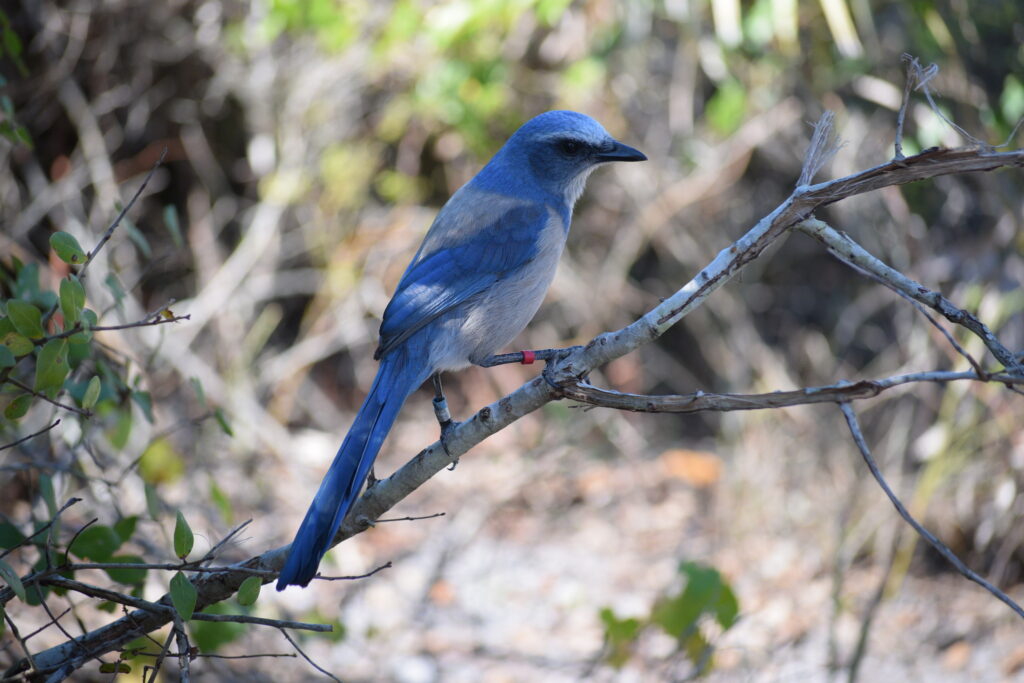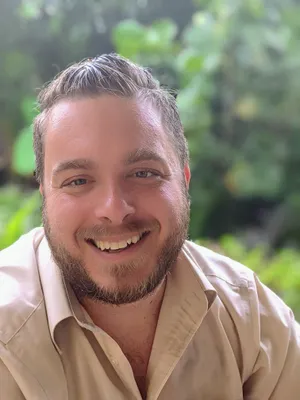By Dustin Angell
From the beaches to the prairies. From the towns and the cities. From the hills of Tallahassee, the people shout with glee, “The Florida scrub jay is the new state bird!”
If only this were true. The Florida scrub jay, Florida’s only unique bird species, continues to wait its turn but, year after year, its chances die on the Senate floor.
Florida scrub jays nurture Florida’s unique elfin oak forests –– each adult burying 6,500-8,000 acorns a year –– coaxing life from all-but-sterile soils. Perching on pine snags, they stand as sentinels during cycles of drought, flooding, and fire. Florida scrub jays survive in a land of extremes, thriving where northern mockingbirds dare not tread.

These brash and boisterous Florida loyalists live atop ancient dune islands in the peninsula’s oldest wildlands. They form close-knit families with precise territory boundaries and were once found in almost every county in the peninsula.
The Florida scrub jay’s ancestors, along with 10 other bird species, arrived from the American West around 2 million years ago. Of these, only the ancestor of the burrowing owl and Florida scrub jay survived in Florida. Nearly all went extinct, but the Florida scrub jay ancestor adapted and evolved into a new Florida species, the only bird to ever do so. Florida scrub jay families have lived in parts of Florida for 650,000 Florida scrub jay generations.
This feathered Floridian long ago became a habitat specialist, binding its fortunes with the land. In the modern world of the Anthropocene – the age of Homo sapiens – only 10% of Florida scrub jay habitat remains and the species population has dropped below 5% left.
Stronger-than-normal hurricanes and massive fish die-offs are visible and immediate reminders of human-caused environmental problems in Florida.
However, the Florida scrub jay is suffering from slow violence. Unlike the genocide of the buffalo in the 19th century, there are no towering piles of Florida scrub jay bodies to photograph. There is only the slow-motion death of a species played out across 100 years of land development perpetrated by waves of newcomers that arrived after the Seminole Wars and the later establishment of Indian reservations.
Slow violence. Piece by piece, Florida’s natural lands are cleared of plants and wildlife, and then repurposed. Not only are there less homes for Florida scrub jay families today, but potential territories and mates are further away; flying to them is dangerous for a stay-at-home bird species.

Compounding this problem is neglectful land management that eschews prescribed fire and invasive species control. In these cases, former Florida scrub jay homes are now overgrown with tangles of woods and weeds.
And then there is climate change. Coastal blight causes the inland flight of Florida developers, leading to further loss of interior highland habitats. The warming climate also threatens to decouple seasonal food sources from the Florida scrub jay nesting season and harm the birds with heat stress. A bird that is too hot to forage for food doesn’t long persist.
Some think that an imperiled species should not be our state bird, but what better candidate than one whose one-of-a-kind ancient Florida origins and continued survival challenge us to envision a healthy land for us and our other-than-human neighbors?
It is time to raise our voices and declare, “The Florida scrub jay is the real state bird!”
Dustin Angell is an environmental educator and conservation photographer in the headwaters of the Florida Everglades. This opinion piece was originally published by the Tallahassee Democrat, which is a media partner of The Invading Sea. Banner image: A Florida Scrub Jay at Merritt Island National Wildlife Refuge (iStock image).
Sign up for The Invading Sea newsletter by visiting here. To support The Invading Sea, click here to make a donation. If you are interested in submitting an opinion piece to The Invading Sea, email Editor Nathan Crabbe at ncrabbe@fau.edu.



